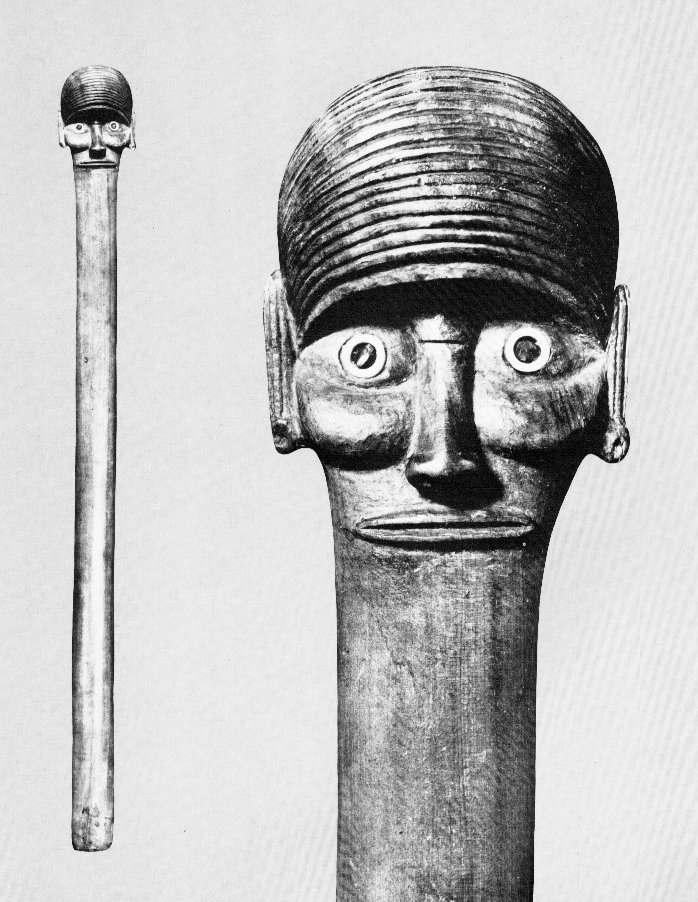|
||||||||

GD31
|
ua |
Via diacritic marks they have split up ua into different words: ûa, u'a, ua and uá. |
||||||
A few preliminary remarks and imaginations: 1. This glyph type maybe depicts the arched 'eyebrows' of the double-faced ua, the ceremonial staff. "The double-headed ua is variously described as a ceremonial staff occasionally employed as a fighting weapon, or as a long double-handled club normally carried as a badge of rank. Either interpretation is probably correct. A number of authentic pieces have been preserved and many more have been carved in post-missionary times primarily, however, from imported wood.
(Ref. Heyerdahl 3) Whereas the slightly oval neck section of the staff is almost circular, its shorter diameter decreases and its longer increases towards the lower end, giving the staff a spatular shape. Sometimes, however, according to the suitability of the wood, the staff has a uniform cross section all the way down and the representation is bilaterally symmetrical. Eyes are inlaid as on the wooden images with bone rings enclosing obsidian disks. Strongly projecting pouches hang down below the eyes on each side of a long, straight and slim nose with naturalistic alae. The flat, elliptical mouth is carved with raised lips surrounding a horizontal groove. Teeth are not indicated. Long, narrow ears with earplugs are carved as bands along the edges. The forehead slants forward to project beyond the eyes. Eyebrows are lacking, but the wide and tall forehead is traversed horizontally by a dense series of grooves arching from one side to the other." (Heyerdahl 3) On the back side of the head the same face is also carved, i.e. there is a double set of grooves, one on each side. If the ua glyph type exhibits the arching grooves on the head of a ua staff, then we can see both sides at once. Only three grooves are drawn, but they can represent all the grooves. |
||||||||
